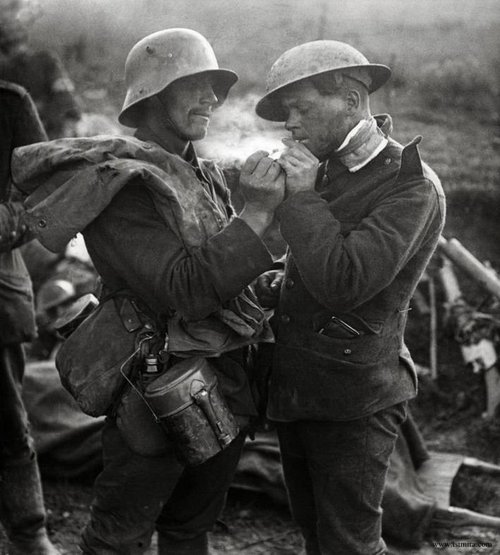DESCRIPTION
Well I like to think I know quite a lot about WW2 German helmets however I really can't say the same for WW1 helmets but I will give it a try. From chapters I have read in Lugwig Baer's compressive book on German helmets the M18 ear cut out helmet was actually only ever issued very late in the war in August in fact 1918 just two months before the Armistice was signed. The entire goal of this helmet was not as many collectors believe to be used by calvary men or radio-operators but rather as a way for the everyday WW1 trench bound soldier to hear better in general while in the field. Soldiers during the war were reporting back that they had a difficult time narrowing down the direction of incoming fire since the bulky skirt of the M16/17 and M18 effectively blocked part of their hearing. The decision was made although late in the war to do a test run of only 100,000 ear-cut out helmets for use in the field. The helmets only first arrived in August just two months before the end of the war and so never really had much of a run. The contract for the 100k helmets was exclusively with ET and all of them were to be made only in a size 64.
There is quite a lot of craziness out there among WW1 collectors some of whom believe that the tortoise shell pattern was rarely ever used in the field due to a lack of overwhelming photographic evidence. Also there are many cases of local french farmers and post war 1919-20 entrepreneurs who re-created these camo patterns to sell as souvenirs to returning G.I.'s. None of us know as we weren't there but I do imagine some of that sort of thing definitely took place. But there is also enough original WW1 camo helmets out there and enough photos I have personally seen to believe that the Kaiser's own soldiers were also painting these themselves.
I have seen a lot of fake ear-cut out helmets on the marketplace but most of those have the wrong shape and slope to the scallops that only an original bears out. Also, beware of any ear-cut with thick paint on the inside rim neatly covering up the ET64. You always want to make sure you get a clean look at the ET64 stamping making sure it's in gothic font and in the right location. On the inside dome of every WWI German helmet you will find a heating lot code. These codes were used by the factories during production. In many cases the heating lot code will indicate where the steel was milled. These steel mills are called rolling mills. In this case the heating code is stamped BD579F which stands for Stahlwerk Becker in Kiefeld. At the back of the helmet is another marking a little more difficult to make out and reads 5RR5. This must be a production control number similar to what they began using during WW2.
The inside liner is white because it was tanned using a chromium solution which stood up better under damp trench conditions instead of the former vegetable tanning which turned the leather brown. All 3 split pins are matching and original to the shell and the original chinstrap with it's carbide metal hook system is in tip top shape and dated 1918.
$8500 - TOUGH TO UPGRADE
Please call, text or email me if interested.
Tel/Text: 1-438-502-5052
Email Us: helmetsofwar@gmail.com



